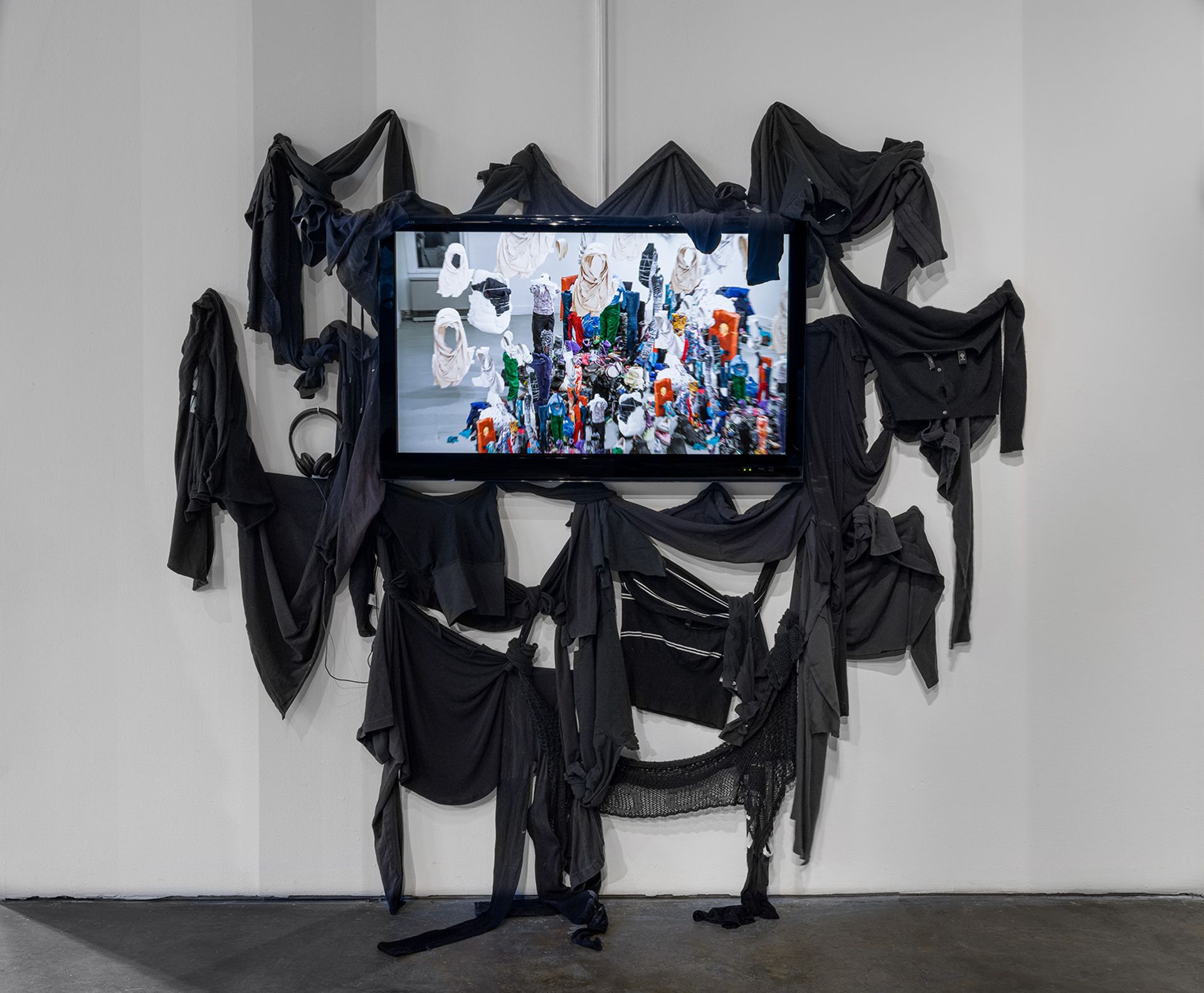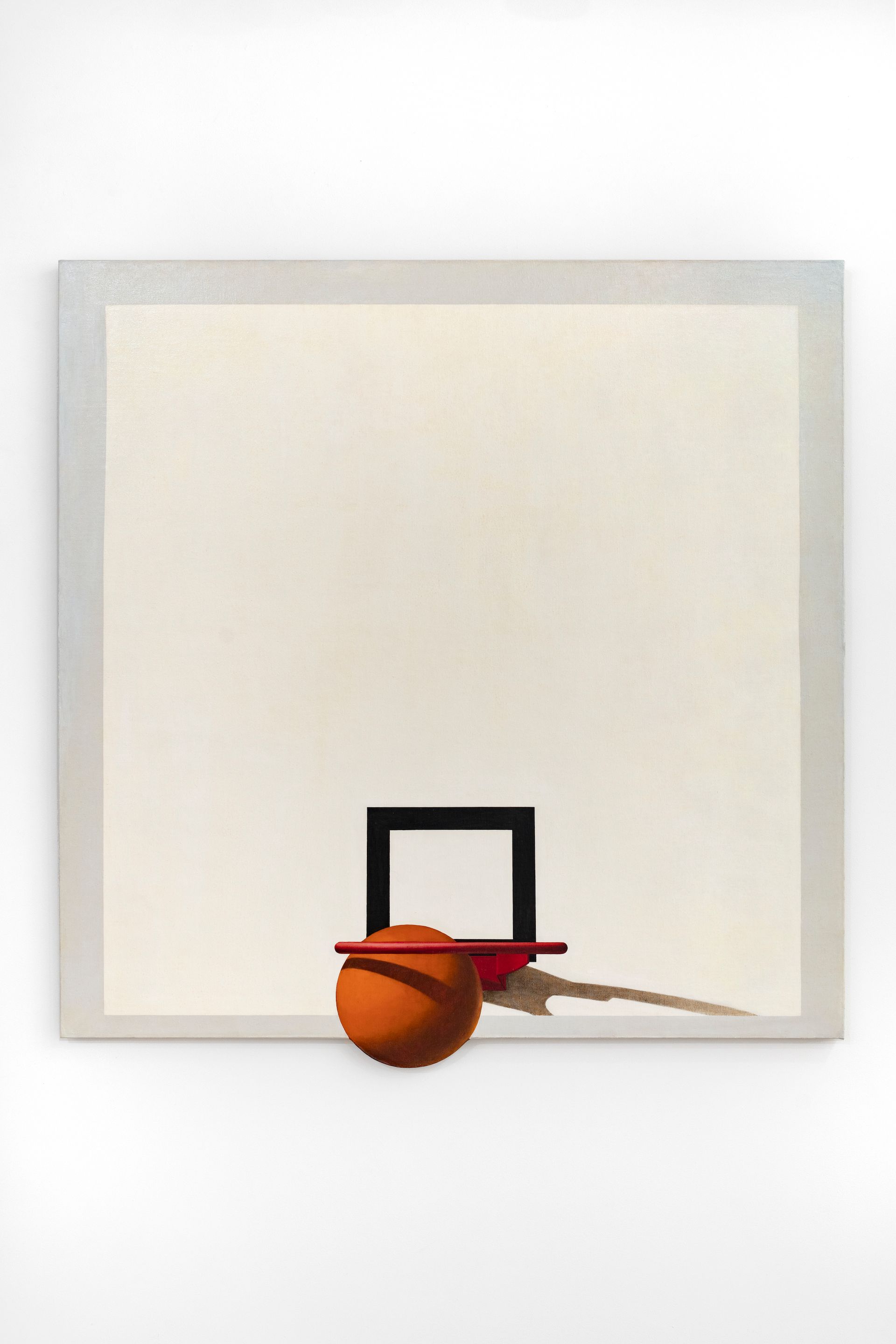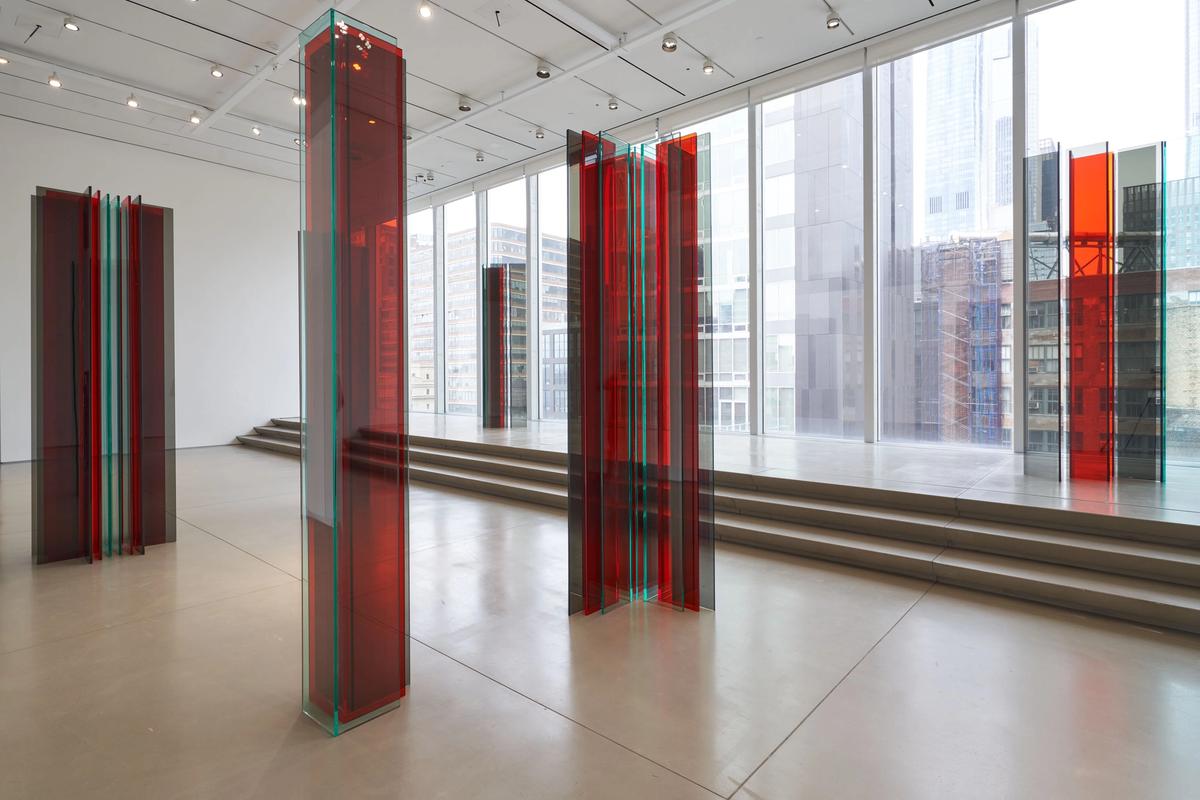Robert Irwin: New Work
Until 30 April at Pace, 540 West 25th Street, Manhattan
The American artist Robert Irwin, one of the foremost figures of the Light and Space movement that emerged in Los Angeles in the 1960s, presents a series of recent and never-exhibited works in this exhibition that expand on his decades-long experimentation with ambient light and site-specificity. The show spans two floors at Pace, beginning with new works from Irwin’s Unlight series on the first floor, including the largest he has made in the series, which comprise fluorescent fixtures and tubes that interact with the subtle and mutable effects of light and motion. On the seventh floor, a series of large-scale columnar sculptures made from glass-like panels of acrylic sheets pigmented in translucent green, slate and red tones (the latter marking new “chromatic terrain” for the artist, best-known for his use of transparent materials) ethereally colorise the sun-filled space. Irwin (now aged 93) has exhibited with Pace since 1966, shortly after he shifted his focus from painting to installation art and sculpture, in which he emphasises the ever-evolving environment of the work. “The thing has relevance only in terms of the fact that it responds to a specific situation; it’s not capable of being moved from one situation to another situation without being altered by the change of condition,” he said in a 1973 interview with the Los Angeles County Museum of Art. “It counters the whole idea that art is a transcending power of some sort, that it can transcend time and culture and so forth.”

Victoria-Idongesit Udondian, installation view of How Can I Be Nobody at Smack Mellon. Etienne Frossard.
Victoria-Idongesit Udondian: How Can I Be Nobody
Until 10 April at Smack Mellon, 92 Plymouth Street, Brooklyn
The Nigerian artist Victoria-Idongesit Udondian considers the connection between textiles, labour economies and marginalised women in her work. In her commission for the non-profit arts organisation Smack Mellon, Udondian conceived an immersive piece comprising more than 800 pounds of donated t-shirts and other clothes that were stitched or knotted together, forming towering tapestries throughout the warehouse space (a converted industrial boiler). The artist completed the piece with several collaborators, including paid volunteers from a charitable textile centre that helps refugee and immigrant women gain financial security through the creation of handcrafted objects. Sculptural casts of her contributors’ hands sprout ominously from the sweeping textiles, and an adjacent video installation contextualises the work. Udondian represented Nigeria at the 56th Venice Biennial and recently completed a residency at the Sacatar Institute in Bahia, where she created several installations and performances influenced by the aesthetics of the Afro-Brazilian religion Candomblé, known for its doctrine on how dress and adornment mediates identification with the divine. A dance performanceaddressing themes of migration and labour, made in collaboration with the choreographer Danion Lewis, will be held on 9 April.

Barkley L. Hendricks, Still Life #5, 1968. © Barkley L. Hendricks. Courtesy of the Estate of Barkley L. Hendricks and Jack Shainman Gallery, New York.
Barkley L. Hendricks: In the Paint
Until 30 April, Jack Shainman Gallery, 513 West 20th Street, Manhattan
March Madness has reached Chelsea, where this showcase of the late great portrait painter Barkley L. Hendricks’s basketball paintings finds him exploring the inherent potential for geometric abstraction in various configurations of hoops, balls and backboards. The resulting canvases, mostly made between 1967-71 when he was a student at the Pennsylvania Academy of the Fine Arts and Yale University, playfully transgress the boundary between figuration and abstraction. They also upend the prevailing Minimalist orthodoxy of the day that viewed abstract art as fundamentally separate from the stuff of daily life and necessarily free of identity politics and humour. The exhibition also includes Hendricks’s documentary photographs of makeshift basketball hoops from the 1990s and 2000s, plus a group of his sketchbooks from the 1980s and 90s that show drawings of various realised and unrealised basketball-themed works. One gleeful sketch shows an outstretched arm shoving a painting through a hoop, with an annotation that reads: “Slam dunk some culture—I’ve had it with reality.” It’s an apt coda to a show that demonstrates just how mutually dependent culture and reality were for Hendricks.


